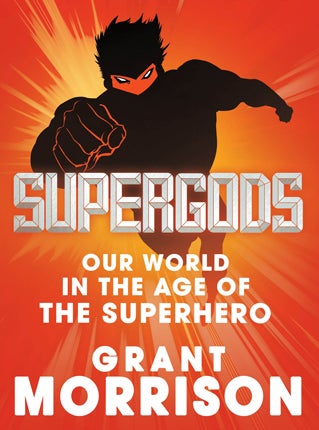Read an exclusive extract from Grant Morrison's Supergods

Your support helps us to tell the story
From reproductive rights to climate change to Big Tech, The Independent is on the ground when the story is developing. Whether it's investigating the financials of Elon Musk's pro-Trump PAC or producing our latest documentary, 'The A Word', which shines a light on the American women fighting for reproductive rights, we know how important it is to parse out the facts from the messaging.
At such a critical moment in US history, we need reporters on the ground. Your donation allows us to keep sending journalists to speak to both sides of the story.
The Independent is trusted by Americans across the entire political spectrum. And unlike many other quality news outlets, we choose not to lock Americans out of our reporting and analysis with paywalls. We believe quality journalism should be available to everyone, paid for by those who can afford it.
Your support makes all the difference.In 1958 Superman comics were still big sellers, having weathered the storms of the witch-hunt years by adhering closely to the central tenets of the Comics Code and aping the formula of the popular TV show. After Mortimer Weisinger occupied the editorial chair that year, Superman sales overtook even the Disney titles, making him the most popular comic character in the world.
Famously described by comics writer Roy Thomas as “a malevolent toad,” Mort Weisinger had worked as a story editor on TV’s Adventures of Superman before returning to New York to revamp the comic book. While other comics strove to connect with an older audience, Weisinger aimed his books at the gigantic audience of children from the postwar population boom. To keep the bright, active kids of the 1950s engaged, Weisinger and his writers exchanged the pedestrian realism of the TV series and the comic stories it had inspired for the kind of science-fantasy spectacle that couldn’t be duplicated on film or TV. No other popular form existed where spec¬tacular scenes of men tossing planets at one another could be created with any degree of believability. Under Weisinger, a sci-fi fan, Superman reached levels of power previously enjoyed only by Hindu gods.
Even the covers became more exciting, transformed into compelling poster-like advertisements for the stories within. In the forties and early fifties, a typical Superman cover portrayed him in iconic pose: lifting a car, towing a liner, or waving the Stars and Stripes. But Weisinger favored sensational “situation” covers with word balloons and unlikely setups that could only be resolved by purchasing the issue. Oddly, while this cosmic inflation was taking place, Superman stories were becoming more inti¬mate and more universal in their appeal. In tune with the psychoanalytic movement (and to evade the code), Weisinger developed an uncanny ability to transform every dirty nugget from the collective unconscious into curiously compelling narratives for kids.
Superman was now a grown-up, a mature patriarch, drawn in the clean fifties lines of an artist with the unfortunate name of Wayne Boring.
©Grant Morrison, 2011
Extracted from Supergods: Our World in the Age of the Superhero, by Grant Morrison, published by Jonathan Cape.
Join our commenting forum
Join thought-provoking conversations, follow other Independent readers and see their replies
Comments